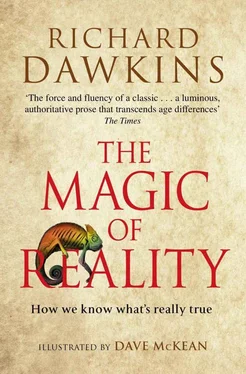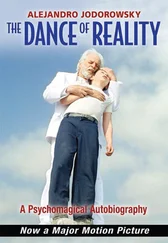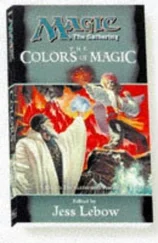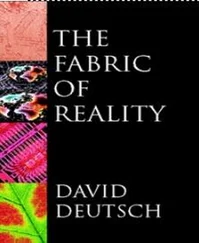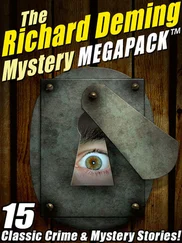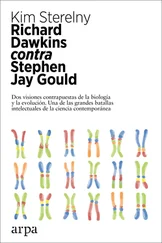Now, instead of looking at your finger, look at a star out in the night sky, switching from eye to eye. The star won’t hop at all. It is much too far away. In order to make a star ‘hop’ from side to side, your eyes would need to be millions of miles apart! How can we achieve the same effect as switching eyes millions of miles apart? We can make use of the fact that the Earth’s orbit around the sun has a diameter of 186 million miles. We measure the position of a nearby star, against a background of other stars. Then, six months later, when the Earth is 186 million miles away at the opposite side of its orbit, we measure the apparent position of the star again. If the star is quite close, its apparent position will have ‘hopped’. From the length of the hop, it is easy to calculate how far away the star is.
Unfortunately, though, the parallax method works only for nearby stars. For distant stars, and certainly for other galaxies, our two alternating ‘eyes’ would need to be much further apart than 186 million miles. We have to find another method. You might think you could do it by measuring how brightly the galaxy seems to shine: surely a more distant galaxy should be dimmer than a closer one? The trouble is that the two galaxies might really be of different brightnesses. It’s like estimating how far away a lit candle is. If some candles are brighter than others, how would you know whether you were looking at a bright candle far away, or a dim candle nearby?
Fortunately, astronomers have evidence that certain special kinds of stars are what they call ‘standard candles’. They understand enough of what is going on in these stars to know how bright they are – not as we see them, but their actual brightness, the intensity of the light (or it might be X-rays or some other kind of radiation that we can measure) before it starts its long journey to our telescopes. They also know how to identify these special ‘candles’; and so, as long as they can find at least one of them in a galaxy, astronomers can use it, with the assistance of well-established mathematical calculations, to estimate how far away the galaxy is.
So we have the parallax method for measuring very short distances; and there is a ‘ladder’, so to speak, of various kinds of standard candles that we can use for measuring a range of increasingly great distances, stretching out even to very distant galaxies.
OK, so now we know what a galaxy is, and how to find out its distance from us. For the next step in the argument, we need to make use of the light spectrum, which we met in Chapter 7 on the rainbow. I was once asked to contribute a chapter to a book in which scientists were invited to nominate the most important invention ever. It was fun, but I had left it rather late before joining the party and all the obvious inventions had already been taken: the wheel, the printing press, the telephone, the computer and so on. So I chose an instrument that I was pretty sure nobody else would choose, and is certainly very important even though not many people have ever used one (and I must confess that I’ve never used one myself). I chose the spectroscope .
A spectroscope is a rainbow machine. If it is attached to a telescope, it takes the light from one particular star or galaxy and spreads it out as a spectrum, just as Newton did with his prism. But it is more sophisticated than Newton’s prism, because it allows you to make exact measurements along the spread-out spectrum of starlight. Measurements of what? What is there to measure in a rainbow? Well, this is where it starts to get really interesting. The light from different stars produces ‘rainbows’ that are different in very particular ways, and this can tell us a lot about the stars.
Does this mean that starlight has a whole variety of strange new colours, colours that we never see on Earth? No, definitely not. You have already seen, on Earth, all the colours that your eyes are capable of seeing. Do you find that disappointing? I did, when I first understood it. When I was a child, I used to love Hugh Lofting’s Doctor Dolittle books. In one of the books the doctor flies to the moon, and is enchanted to behold a completely new range of colours, never before seen by human eyes. I loved this thought. For me it stood for the exciting idea that our own familiar Earth may not be typical of everything in the universe. Unfortunately, though the idea is worthwhile, the story was not true – could not be true. That follows from Newton’s discovery that the colours we see are all contained in white light and are all revealed when white light is spread out by a prism. There are no colours outside the range we are used to. Artists may come up with any number of different tints and shades, but all these are combinations of those basic component colours of white light. The colours we see inside our heads are really just labels made up by the brain to identify light of different wavelengths. We’ve already encountered the complete range of wavelengths here on Earth. Neither the moon nor the stars have any surprises to offer in the colour department. Alas.
So what did I mean when I said that different stars produce different rainbows, with differences we can measure using a spectroscope? Well, it turns out that when starlight is splayed out by a spectroscope, strange patterns of thin black lines appear in very particular places along the spectrum. Or sometimes the lines are not black but coloured, and the background is black. The pattern of lines looks like a barcode, the sort of barcode you see on things you buy in shops to identify them at the cash till. Different stars have the same rainbow but different patterns of lines across it – and this pattern really is a kind of barcode, because it tells us a lot about the star and what it is made of.
It isn’t only starlight that shows the barcode lines. Lights on Earth do too, so we’ve been able to investigate, in the laboratory, what makes them. And what makes the barcodes, it turns out, is different elements . Sodium, for example, has prominent lines in the yellow part of the spectrum. Sodium light (produced by an electric arc in sodium vapour) glows yellow. The reason for this is understood by physical scientists, but not by me because I’m a biological scientist who doesn’t understand quantum theory.
When I went to school in the city of Salisbury in southern England, I remember being utterly fascinated by the weird sight of my bright red school cap in the yellow light of the street lamps. It didn’t look red any more, but a yellowish brown. So did the bright red double-decker buses. The reason was this. Like many other English towns in those days, Salisbury used sodium vapour lamps for its street lights. These give off light only in the narrow regions of the spectrum covered by sodium’s characteristic lines, and by far the brightest of sodium’s lines are in the yellow. To all intents and purposes, sodium lights glow with a pure yellow light, very different from the white of sunlight or the vaguely yellowish light of an ordinary electric bulb. Since there was virtually no red at all in the light supplied by the sodium lamps, no red light could be reflected from my cap. If you are wondering what makes a cap, or a bus, red in the first place, the answer is that the molecules of dye, or paint, absorb most of the light of all colours except red. So in white light, which contains all wavelengths, mostly red light is reflected. Under sodium vapour street lamps, there is no red light to be reflected – hence the yellowy brown colour.
Sodium is just one example. You’ll remember from Chapter 4 that every element has its own unique ‘atomic number’, which is the number of protons in its nucleus (and also the number of electrons orbiting it). Well, for reasons connected with the orbits of its electrons, every element also has its own unique effect upon light. Unique like a barcode… in fact, a barcode is pretty much what the pattern of lines in the spectrum of starlight is. You can tell which of the 92 naturally occurring elements are present in a star by spreading the star’s light out in a spectroscope and looking at the barcode lines in the spectrum.
Читать дальше
